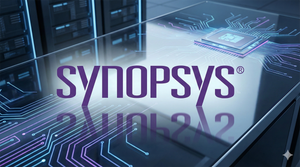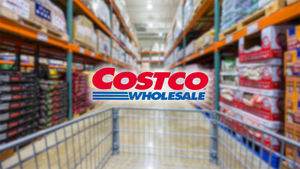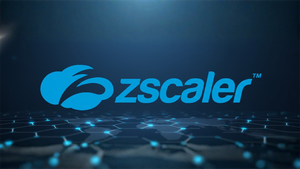--News Direct--
In the ever-evolving landscape of personal finance, the choice of where to park your savings is a decision that can significantly impact your financial health and goals. Among the plethora of savings options available, High Yield Savings Accounts (HYSAs) stand out as a compelling choice for individuals seeking to maximize their returns without sacrificing the security and accessibility of their funds.
A High-Yield Savings Account, as the name suggests, offers an Annual Percentage Yield (APY) that is considerably higher than that of traditional savings accounts. This heightened interest rate is the cornerstone of its appeal, allowing savers to accrue more substantial earnings on their deposits over time. However, the allure of HYSAs extends beyond just attractive APYs. These accounts often come with a suite of features designed to provide both flexibility and security, making them an ideal choice for a variety of savings goals – be it for an emergency fund, a major purchase, or simply as a tool for financial growth.
Yet, navigating the world of HYSAs can be daunting. With a myriad of options available, each offering different rates, fees, and terms, how does one determine the best account for their unique financial situation? It's not merely about chasing the highest interest rate; various factors such as fee structures, access to funds, minimum balance requirements, and the overall reputation and reliability of the financial institution play crucial roles in the decision-making process.
In this article, we delve into the practical aspects of choosing the best high yield savings account. We will explore what companies typically offer, analyze the pros and cons of different HYSA accounts, and provide insights to help you make an informed decision that aligns with your financial aspirations. Remember, the right high-yield savings account can be a powerful tool in your financial toolkit, offering not just better returns, but peace of mind and a path towards achieving your financial goals.
Unlock the full potential of your savings with the right high-yield account.
Understanding Annual Percentage Yield (APY)
The Annual Percentage Yield, or APY, is the lynchpin of a High Yield Savings Account. It represents the real rate of return on your savings, factoring in the effects of compound interest over a year. Unlike simple interest, which is calculated solely on the principal amount, compound interest is calculated on both the principal and the accrued interest, leading to faster growth of your savings. Hence, when comparing HYSAs, a higher APY typically translates to more earnings on your deposit over time.
However, it's important to understand that APY is not a static figure. It often fluctuates in response to economic trends and policies, particularly the rates set by the Federal Reserve. This means the attractive rate you sign up for today might change, impacting the growth of your savings. Therefore, while a high APY is desirable, it's also crucial to consider the stability and historical performance of the financial institution's rates.
Moreover, the advertised APY can come with certain conditions. Some accounts offer tiered interest rates, where the APY varies depending on your account balance. Others might require a minimum balance or regular deposits to maintain the high APY. It's vital to read the fine print and understand these conditions to ensure that the account aligns with your financial capabilities and goals.
It's also worth noting that the difference in APYs, especially among the top-performing accounts, might be minimal. In such cases, other factors like fees, access to funds, and customer service can take precedence in your decision-making process. After all, an account with a slightly lower APY but no monthly fees and greater withdrawal flexibility might be more beneficial in the long run than one with a marginally higher APY but restrictive terms.
In essence, while APY is a critical factor in selecting a high-yield savings account, it should be weighed alongside other account features and terms. A holistic view of what each account offers ensures that you choose a high yield savings account that not only provides a favorable rate of return but also suits your overall financial needs and strategies.
Find out how to maximize your returns with the best high yield savings options.
Assessing Fees and Charges
When choosing a High-Yield Savings Account, one cannot overlook the importance of understanding the fee structure. While the appeal of a higher APY is clear, the benefit can be significantly undercut by fees and charges that some financial institutions may impose. These can range from monthly maintenance fees to charges for transactions, and even penalties for not maintaining a minimum balance.
Monthly maintenance fees are a common charge associated with some HYSAs. They can vary in amount and, over time, may reduce your earnings from interest. However, it's noteworthy that many high-yield accounts offer fee waivers, often tied to maintaining a minimum balance or meeting certain deposit requirements. It's crucial to evaluate whether these conditions align with your financial habits and if you can realistically meet them to avoid the fees.
Transaction fees are another consideration. While HYSAs are not typically designed for frequent transactions, some accounts may charge for excessive withdrawals or transfers, especially if they exceed the federally regulated limit of six per month. Understanding these limitations is key to avoiding unexpected fees.
In addition to these, some accounts might have fees for services like wire transfers, paper statements, or even for closing the account early. These can add up and diminish the overall appeal of a high-interest rate.
On the flip side, the rise of online banking has led to a competitive market where many institutions offer HYSAs with minimal to no fees, leveraging their lower operational costs. This has made fee-free high yield savings accounts more accessible and appealing.
In conclusion, while assessing the fee structure of a HYSA, it's important to consider how these fees align with your savings habits and goals. An account with a slightly lower APY but no fees may be more beneficial than one with a higher APY but a fee structure that could erode your earnings. Always read the fine print and consider how the fees could impact your savings in the long term, ensuring that your chosen HYSA truly serves your financial interests.
Start building your financial future today with a high-yield savings account.
Evaluating Access to Funds and Account Liquidity
One of the defining features of a High-Yield Savings Account is the balance it strikes between earning interest and providing access to your funds. This balance, often referred to as liquidity, is crucial to consider based on your financial needs and goals. Most HYSAs allow for relatively easy access to funds, but there are some limitations and features that vary across different accounts.
Federal regulations typically limit certain types of withdrawals and transfers from savings accounts to six per month. This includes HYSAs and is crucial for account holders who might need frequent access to their funds. However, it's essential to understand that not all transactions count towards this limit. For instance, withdrawals made in person at a branch or at an ATM usually do not count towards the limit. Understanding these nuances is vital in choosing an account that aligns with your access needs.
Some high yield savings accounts offer features like ATM cards or checks, which can provide more flexible access to funds. However, these features are not standard across all HYSAs. For those who prioritize frequent access to their savings, an account with these features might be more appealing. On the other hand, if your goal is to grow your savings with minimal withdrawals, an account without these features might offer a higher APY or lower fees, making it a more suitable option.
There's also the aspect of electronic transfers, which have become increasingly common, especially with online banks. These transfers can usually be initiated quickly and easily, but it's important to consider any potential transfer times or fees. Some accounts might offer instant or same-day transfers, while others could take a few business days.
In summary, when considering the liquidity of a high-yield savings account, it's important to weigh how often you plan to access the funds against the benefits of the account's interest rate and fee structure. If easy and frequent access to your funds is a priority, look for accounts that offer flexible withdrawal options and understand any associated limits or fees. Conversely, if your primary goal is to maximize savings, an account with fewer access options but a higher APY might be more beneficial. The key is to align the account's liquidity features with your personal financial strategy and requirements.
Explore the top factors that make a high-yield savings account stand out.
Minimum Balance and Deposit Requirements: Navigating the Thresholds
When selecting a High Yield Savings Account (HYSA), understanding the minimum balance and deposit requirements is crucial. These requirements can vary significantly between accounts and can have a substantial impact on both your ability to maintain the account and your overall savings growth.
Minimum balance requirements refer to the amount of money that must be kept in the account to either earn the advertised interest rate or avoid fees. Some HYSAs may offer a higher APY but require a higher minimum balance to qualify for that rate. If your account balance falls below this threshold, you might earn a lower interest rate or incur a fee. For individuals who are just starting to save or who prefer to keep a lower balance, an HYSA with a low or no minimum balance requirement may be more appropriate.
On the other hand, minimum deposit requirements pertain to the initial amount required to open the account. This can range from a nominal amount to several thousand dollars. For those who have a larger sum available and are looking to maximize their interest earnings right away, an account with a higher initial deposit requirement might offer a more attractive APY. However, for those who are building their savings gradually, an account with a lower or no initial deposit requirement provides an accessible entry point to high-yield savings.
It's also important to consider how these requirements align with your financial habits and goals. An account with a high minimum balance requirement might offer a great APY, but it could be less beneficial if it forces you to tie up funds that you might need for other purposes. Similarly, a high initial deposit requirement might not be feasible if you're just starting to save.
In conclusion, when evaluating minimum balance and deposit requirements, consider your current financial situation and savings goals. If maintaining a high balance is feasible and aligns with your objectives, an account with a higher minimum balance requirement might be beneficial. Conversely, if you're looking for flexibility or are building your savings from a lower base, seek out accounts with lower or no minimum requirements. The key is to choose an HYSA that complements your financial capacity and aligns with your savings strategy.
Discover the secrets to choosing a high yield savings account that suits your goals.
Online vs. Traditional Banking: Choosing the Right Platform for Your HYSA
The decision between online and traditional banking institutions is a pivotal one when selecting a High Yield Savings Account (HYSA). Each platform offers distinct advantages and limitations that can impact the overall utility and convenience of your savings account.
Online banks have surged in popularity, particularly for HYSAs, primarily due to their typically higher APY offerings. These institutions often have lower overhead costs compared to traditional brick-and-mortar banks, allowing them to offer more competitive interest rates. Additionally, online banks tend to have fewer fees, such as monthly maintenance fees, which can further enhance the growth of your savings. The digital-first approach also means that account management, from opening an account to conducting transactions, can be done conveniently from anywhere with internet access.
However, the online banking experience does come with its own set of considerations. The most notable is the lack of physical branches, which can be a drawback for individuals who prefer in-person banking services or need to perform transactions that require a physical presence, like depositing cash. Additionally, while online banks typically offer robust customer service through phone or chat support, this might not match the immediacy and personal interaction provided by a local branch.
Traditional banks, on the other hand, offer the familiarity and security of a physical presence, which can be reassuring for many customers. The ability to visit a branch, speak directly with bank representatives, and handle cash deposits and withdrawals can be significant advantages. Traditional banks may also offer a broader range of financial services under one roof, including loans, credit cards, and investment products, which can be convenient for customers looking for a one-stop financial hub.
However, traditional banks often have higher operating costs, which can translate into lower interest rates for savings accounts and more fees compared to their online counterparts. While some traditional banks offer competitive rates for their HYSAs, they may still fall short of the rates offered by online banks.
In summary, the choice between an online or traditional bank for your HYSA depends largely on your preferences and banking habits. If maximizing your interest earnings and enjoying lower fees are your top priorities, and you are comfortable with digital banking, an online bank might be the ideal choice. However, if you value face-to-face interactions, require branch services, or prefer a more integrated banking experience, a traditional bank could be more suitable. Understanding these trade-offs will help you choose an HYSA that aligns with your personal banking preferences and financial goals.
Get expert tips on selecting a high-yield savings account for maximum growth.
Safety and Security: Ensuring Your Savings Are Protected
In the realm of High Yield Savings Accounts (HYSAs), the safety and security of your deposited funds are paramount. Understanding the protection measures and insurance coverage provided by financial institutions is a critical aspect of choosing the right HYSA.
One of the key features to look for in any savings account, high-yield or otherwise, is whether the institution is insured by the Federal Deposit Insurance Corporation (FDIC) or, for credit unions, the National Credit Union Administration (NCUA). This insurance protects and secures your deposits up to $250,000 per depositor, per insured bank, for each account ownership category, in the event of a bank failure. Ensuring that your chosen HYSA is backed by FDIC or NCUA insurance offers peace of mind and a safeguard for your hard-earned savings.
For online banks, which have become increasingly popular for their high-yield offerings, the concern for digital security is also crucial. Reliable online banks employ robust security measures such as two-factor authentication, encryption, and continuous monitoring for fraudulent activities to protect your personal and financial information. While these measures are highly effective, it's always prudent to engage in safe online banking practices, such as using strong, unique passwords and avoiding public Wi-Fi for banking transactions.
In contrast, traditional brick-and-mortar banks provide the reassurance of physical security and in-person assistance for any security concerns or issues that may arise. For many savers, the ability to visit a branch and speak directly with bank staff provides an additional layer of trust and confidence in the safety of their savings.
However, it's important to note that while FDIC or NCUA insurance protects your money from bank failures, it does not cover losses due to theft or fraud. As such, it's vital to review the bank's policy on fraudulent activities and understand your responsibilities as an account holder to protect your account.
In conclusion, when evaluating the safety and security of a HYSA, ensure that the financial institution is FDIC or NCUA insured, and consider the level of digital or physical security they offer. Whether you prefer the digital innovation of online banks or the traditional security of a brick-and-mortar institution, confirming these protections is essential in choosing a high-yield savings account that not only grows your savings but also diligently safeguards them.
Learn about the benefits and pitfalls of high yield savings accounts.
Additional Features and Benefits: Beyond the Basic Interest Rate
When choosing a High Yield Savings Account (HYSA), it's important to look beyond the basic interest rate and consider additional features and benefits that can enhance the value of the account. These features, which vary from one financial institution to another, can significantly impact your savings experience and align with your specific financial needs.
One notable feature to consider is the integration of auto-savings tools. Some HYSAs offer automated savings options, such as round-up features on transactions or automatic transfers from checking to savings accounts. These tools can simplify the savings process, making it easier to grow your balance without regular manual intervention.
Another aspect to consider is the availability of bundled accounts. Some financial institutions offer higher APYs or waive certain fees for customers who hold multiple accounts, such as a checking account in addition to their HYSA. This can be a valuable option for those who prefer to have all their banking with one institution and can help streamline account management and maximize benefits.
Customer service is also a critical feature, especially for online banks. The best HYSAs are backed by robust customer support, accessible through multiple channels like phone, email, chat, or even mobile apps. Effective customer service can make a significant difference, particularly when dealing with account issues or needing guidance on account features.
It's also worth looking into any unique or niche features that might align with your personal banking habits or goals. For example, some HYSAs might offer special rates for certain demographics, like students or seniors, or provide unique benefits like financial education resources.
However, while these additional features can provide significant value, they should be balanced against the core aspects of the account, such as the APY, fees, and access to funds. A high-yield savings account with numerous additional features might not be the best choice if it doesn't meet your primary savings objectives or if it comes with high fees or other drawbacks.
In conclusion, when evaluating HYSAs, consider the full range of features and benefits each account offers. Look for options that not only provide a competitive interest rate but also align with your financial habits, offer convenient tools and services, and provide added value through bundled offerings or excellent customer support. By considering these additional features, you can select a high-yield savings account that not only helps grow your savings but also fits seamlessly into your overall financial strategy.
Navigate the world of high yield savings with our comprehensive guide.
Evaluating Your Savings Goals: Matching the HYSA to Your Financial Objectives
A critical step in choosing the best High Yield Savings Account (HYSA) is aligning the account features with your specific savings goals. Every saver has unique objectives, whether it's building an emergency fund, saving for a large purchase, or simply growing wealth over time. The right HYSA should not only offer favorable terms and features but also complement your financial roadmap.
For short-term savers, liquidity is often a key consideration. If you're saving for a goal that's a year or two away, like a vacation or a down payment on a car, you might prioritize accounts with easy access to funds and no penalties for withdrawals. Here, a lower APY with more flexible access might be more beneficial than a higher rate tied to restrictive terms.
Conversely, if your savings goal is more long-term, such as saving for a home purchase several years down the line or building a nest egg, you might be more inclined towards accounts with higher APYs, even if they come with some access restrictions. In these cases, a higher interest rate can significantly impact the growth of your savings over time.
It's also important to consider how your savings goals align with other features like minimum balance requirements or the presence of auto-saving tools. If you're gradually building your savings, an account with a low or no minimum balance requirement and features that facilitate regular deposits can be particularly advantageous.
Moreover, for those with multiple financial goals, diversification across different types of accounts can be a strategic approach. You might choose one HYSA for your emergency fund with easy access and another for long-term savings with a higher interest rate. This strategy allows you to tailor your savings approach to each specific goal.
In summary, aligning your HYSA choice with your savings goals requires a careful assessment of how the account's features – from interest rates and access to funds to minimum balance requirements and additional benefits – fit with your individual financial objectives. By considering these factors, you can select an HYSA that not only offers competitive returns but also supports your overall financial strategy, helping you achieve your savings goals effectively and efficiently.
Ready to boost your savings? Click to find the best high-yield account for you.
Comparing HYSAs to Other Savings Options: Understanding the Alternatives
When choosing the best High Yield Savings Account (HYSA), it's important to also consider how these accounts stack up against other savings options. Understanding the differences can help you make an informed decision about where to place your savings for optimal growth and accessibility.
High Yield Savings vs. Traditional Savings Accounts:
Traditional savings accounts are the most familiar savings vehicle for many individuals. They typically offer lower interest rates compared to HYSAs but are widely available through both online and brick-and-mortar banks. While traditional savings accounts may offer similar safety and security features, such as FDIC or NCUA insurance, their lower APYs can make them less attractive for those looking to maximize their savings growth. However, they often come with fewer restrictions and more flexibility regarding withdrawals and account access.
High Yield Savings vs. Money Market Accounts (MMAs):
Money Market Accounts are another type of savings account that typically offers higher interest rates than traditional savings accounts but may still fall short of the rates offered by the best HYSAs. MMAs often require higher minimum balances and may provide check-writing abilities and debit card access. This can make them a suitable option for individuals who seek both growth and liquidity, but the higher minimum balance requirement may be a barrier for some savers.
High Yield Savings vs. Certificates of Deposit (CDs):
Certificates of Deposit offer fixed interest rates for a specified term, which can range from a few months to several years. The interest rates on CDs can be competitive with HYSAs, but they require you to lock in your funds for the duration of the term, with penalties for early withdrawal. CDs can be a good choice for those with a clear time horizon for their savings goals and who do not require immediate access to their funds.
High Yield Savings vs. Checking Accounts:
Checking accounts are primarily designed for frequent transactions and typically offer little to no interest. While they provide maximum liquidity and accessibility, they are not suitable for growing your savings. For individuals looking to earn interest on their funds while retaining easy access, an HYSA can be a better choice than a checking account.
In conclusion, while HYSAs offer higher interest rates and the potential for greater savings growth, it's crucial to consider your individual financial needs and preferences. The choice between an HYSA, traditional savings account, MMA, CD, or even a checking account will depend on your goals, such as the need for immediate access, desire for stable growth, or willingness to lock in funds for a set period. By comparing these options, you can choose the right vehicle that aligns with your savings strategy and financial objectives.
Elevate your savings strategy with the perfect high-yield account.
Steps to Open a High Yield Savings Account: Navigating the Process
Once you've decided that a High Yield Savings Account (HYSA) aligns with your financial goals, the next step is to open an account. This process, while straightforward, varies slightly depending on the financial institution. Understanding the typical steps involved can help ensure a smooth and efficient account opening experience.
1. Research and Compare:
Before opening an HYSA, conduct thorough research. Compare the interest rates, fees, minimum balance requirements, and accessibility features of various accounts. Online resources and comparison tools can be particularly helpful in this stage, allowing you to weigh the pros and cons of different HYSAs without the influence of specific company promotions or branding.
2. Gather Necessary Documentation:
Typically, you'll need to provide personal identification documents when opening an HYSA. This may include a government-issued ID (such as a driver's license or passport), Social Security number, and proof of address (like a utility bill or lease agreement). Having these documents ready can expedite the process.
3. Choose the Right Institution:
Decide whether you prefer an online bank, a traditional brick-and-mortar bank, or a credit union for your HYSA. This decision should be based on your preferences for access (online vs. in-person), the overall user experience (such as customer service quality and online banking interface), and the features each institution offers that match your savings needs.
4. Apply Online or In-Person:
Most banks and credit unions offer the option to apply for an HYSA online, which is typically the quickest method. However, if you prefer personal interaction or need assistance, visiting a branch (if available) is a viable option. Be prepared to fill out an application form with your personal and financial information.
5. Fund Your Account:
Once your account is opened, the next step is to deposit funds. This can usually be done via a transfer from another bank account, a direct deposit, or, in some cases, by mailing a check. Be mindful of the minimum deposit requirements to ensure your account is activated and starts earning interest.
6. Set Up Account Management Tools:
After your account is active, take advantage of the account management tools offered. This might include setting up online banking, downloading the institution’s mobile app, or enrolling in any automatic savings plans or alerts.
7. Monitor Your Account:
Regularly review your HYSA to monitor the interest accrued and keep an eye on any changes in terms and conditions, such as adjustments in interest rates or fees. Effective monitoring can help you stay on top of your savings goals and adjust your strategy if necessary.
In conclusion, opening a high-yield savings account involves a mix of careful research, preparation, and follow-through. By understanding and navigating these steps effectively, you can smoothly set up an HYSA that not only offers a competitive rate but also fits seamlessly with your overall financial plan.
Navigate the world of high-yield savings with our comprehensive guide.
Conclusion: Making an Informed Choice for Your Savings
Choosing the best High Yield Savings Account (HYSA) is a significant decision in your financial journey. It requires a balanced consideration of various factors, each playing a pivotal role in how well the account serves your financial needs and goals. As you conclude your search for the ideal HYSA, it’s important to reflect on the key considerations that should guide your decision.
Firstly, remember that the highest Annual Percentage Yield (APY) is an attractive feature, but it shouldn't be the sole determinant. Weigh the APY against other aspects like fees, access to funds, and minimum balance requirements. An account with a slightly lower APY but no monthly fees and better access to funds might serve you better in the long run than one with a marginally higher APY but restrictive terms.
Consider the nature of the financial institution offering the HYSA. Online banks often provide higher interest rates due to their lower operational costs, but traditional banks offer the comfort of physical branches and in-person services. Your preference between online convenience and physical accessibility will influence your choice.
The safety and security of your funds are paramount. Ensure that your chosen HYSA is backed by FDIC or NCUA insurance. This protection is crucial for peace of mind and the security of your savings.
Reflect on your savings goals and how they align with the features of different HYSAs. Whether you’re saving for a short-term goal or building a long-term nest egg, choose an account that complements your financial strategy.
Finally, remember that the process of opening an HYSA should be straightforward and align with your capabilities. Gather all necessary documentation, understand the application process, and be prepared to manage your account effectively.
In summary, the best high-yield savings account for you is one that not only offers a competitive interest rate but also aligns with your overall financial picture, including your savings goals, preferred banking practices, and need for security. By carefully considering these factors, you can make an informed choice that optimizes your savings potential and supports your financial well-being.
Ready to boost your savings? Click to find the best high-yield account for you.
Contact Details
Amanda Grant
+1 775-373-2692
View source version on newsdirect.com: https://newsdirect.com/news/high-yield-savings-accounts-a-comprehensive-guide-to-choosing-the-best-option-for-your-financial-goals-350320191





